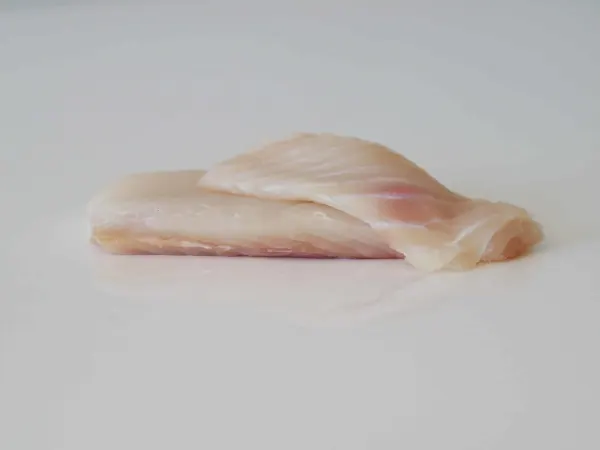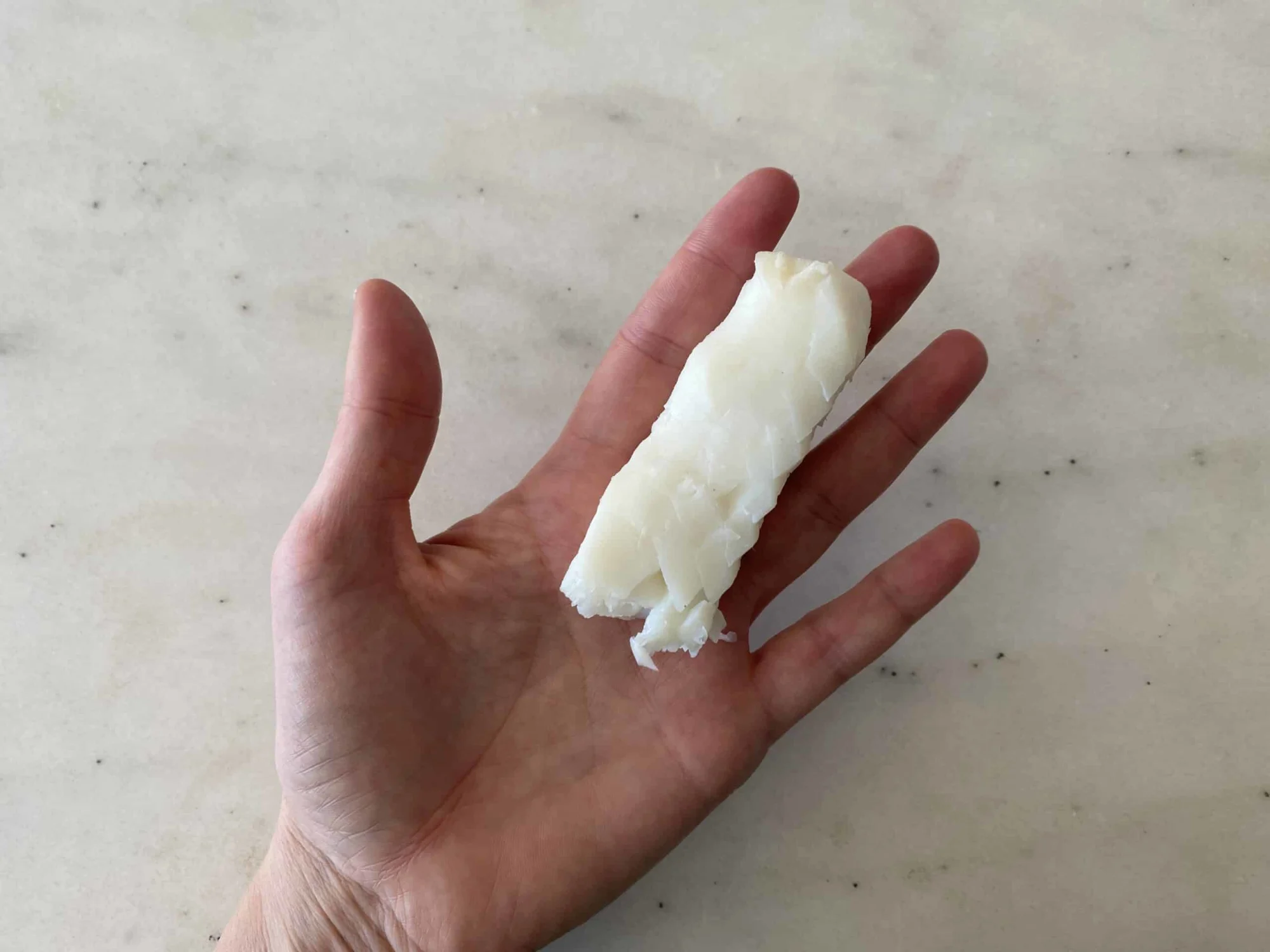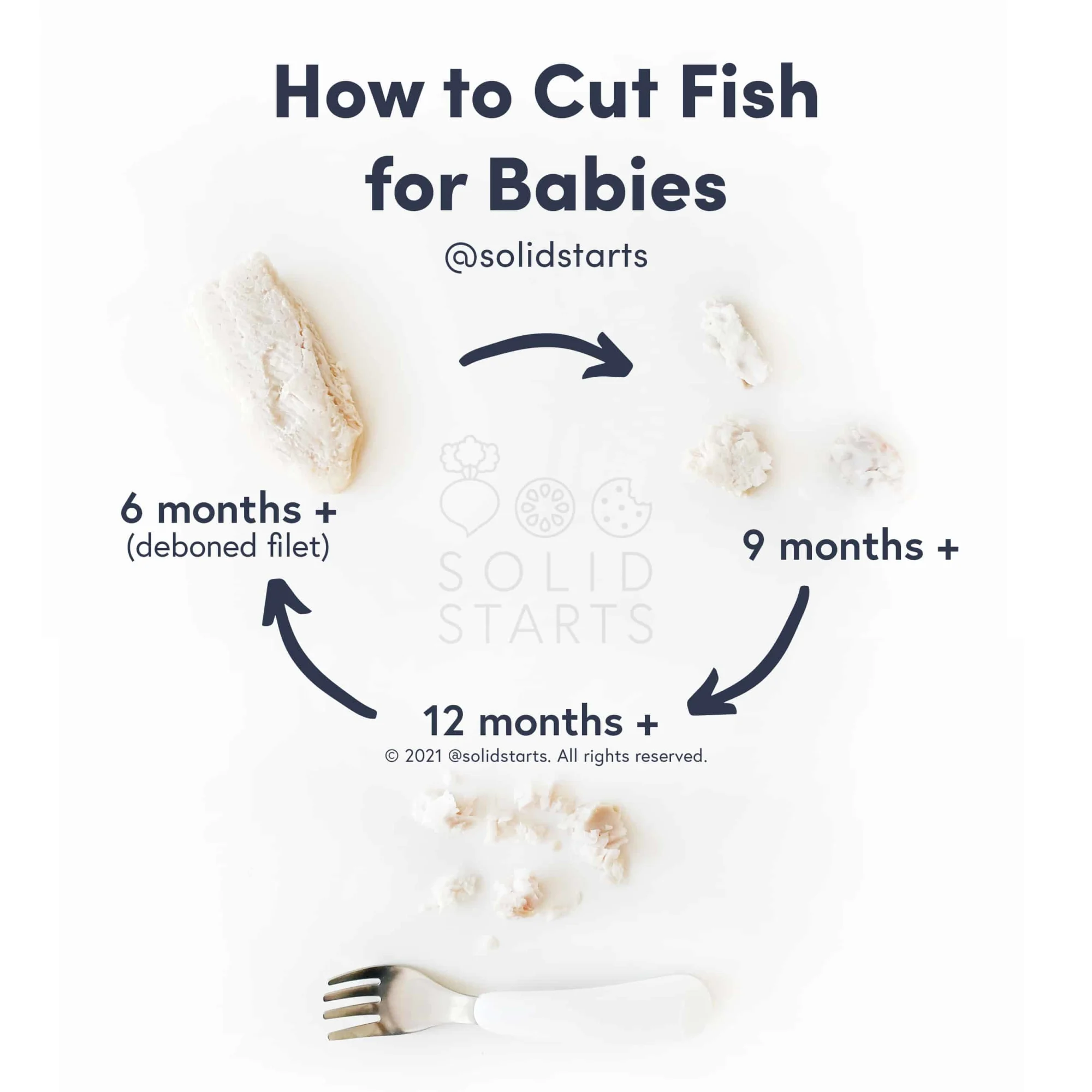Access our First Foods® Database in the Solid Starts App.
Learn moreHalibut
Fish
Age Suggestion
6 months
Iron-Rich
No
Common Allergen
Yes

When can babies eat halibut?
Halibut may be introduced in moderation as soon as baby is ready to start solids, which is generally around 6 months of age. Keep in mind that halibut contains moderate levels of mercury—a toxic metal to which babies and children are particularly susceptible—and there is no known safe level of exposure.
How do you prepare halibut for babies with baby-led weaning?
Every baby develops on their own timeline, and the suggestions on how to cut or prepare particular foods are generalizations for a broad audience.
6 to 9 months old:
Offer well-cooked halibut (with the bones and skin removed) in pieces that are about the size of two adult pinky fingers placed next to one another. Alternatively, mix flaked halibut into grains, mashed potatoes, or other foods that are easy for babies to scoop up with their hands.
9 to 12 months old:
At this age, babies develop their pincer grasp (where the pointer finger and thumb meet) which makes it easier to pick up smaller pieces of food. Once that fine motor skill develops, try moving down in size and offer smaller pieces of well-cooked halibut. Just be sure to remove the skin and bones before serving!
12 to 24 months old:
Fish cake time! Most toddlers in this age range love disc-shaped patties because they are easy to pick up and eat. Try offering homemade fish cakes, but don’t forget to also serve well-cooked flaked halibut on its own once in a while to help the child become familiar with the taste and texture of the fish on its own.


For more information on which fish are safe for babies, see our guide to the Best and Worst Fish for Babies.
Videos
Is halibut a common choking hazard for babies?
No. Halibut is not a common choking hazard, but fish bones certainly are. Be sure to remove any lingering bones before serving freshly cooked halibut to babies, and, as always, stay close during mealtime.
For more information, visit our section on gagging and choking and familiarize yourself with common choking hazards.
Is halibut a common allergen?
Yes. Finned fish are classified as a Global Priority Allergen by the World Health Organization, and halibut is among the most common fish allergens, along with codfish, salmon, and tuna. It’s estimated that only 0.2 percent of people are allergic to finned fish worldwide, and the prevalence of fish allergies in children, while variable, is even less than in adults. About 40% of people with finned fish allergies don’t experience their first allergic reaction until adulthood. Unfortunately, most individuals who are allergic to finned fish do not outgrow the allergy.
Some individuals with finned fish allergy may react from inhaling proteins that become aerosolized when cooking fish. If this is the case for baby, you may wish to avoid cooking fish in the household when baby is present.
Around 50% of individuals with one finned fish allergy will react to another fish as well. This is because the major allergen in finned fish, beta-parvalbumin, is present in most fish, regardless of species. Due to the risks of cross-contamination or mislabeling of fish, allergists often recommend that those allergic to one species of finned fish avoid all finned fish until meeting with an allergist to determine which fish might be safely introduced into the diet. This is an individualized recommendation, so be sure to confirm with your allergist before offering other finned fish if baby is allergic to halibut.
Finned fish are a known trigger of food protein-induced enterocolitis syndrome, also known as FPIES. FPIES is a delayed allergy to food protein which causes the sudden onset of repetitive vomiting and diarrhea to begin a few hours after ingestion. Left untreated, the reaction can result in significant dehydration. Unlike other food allergens, FPIES to finned fish may not present until later in life, and tends to be life-long.
Lastly, a note on scombroid poisoning, which is sometimes mistaken for a fish allergy. Scombroid poisoning is a type of food poisoning that occurs when someone eats fish that has been improperly refrigerated. This allows a large amount of histamine to build up in the fish. When consumed, this large load of histamine can cause symptoms that mimic those of an allergic reaction, causing some people to believe that they have developed a finned fish allergy, even if they are not allergic. Ensuring that fish has been stored at adequately cool temperatures can minimize the risk of such a reaction.
If you have a family history of seafood allergies or suspect baby may be allergic to fish, consult an allergist before introducing halibut. As with all common allergens, introduce halibut in small amounts at first and watch closely as baby eats to see if any adverse reaction occurs. If all goes well, gradually increase the serving size over time. Once common food allergens are successfully introduced, it is recommended to keep them in the diet regularly (twice weekly, if possible). However, this doesn’t mean that each different fish species must be offered multiple times a week. Finned fish share the same major proteins, so it is perfectly acceptable to rotate finned fish varieties according to availability and preference.
Is halibut healthy for babies?
Yes, in moderation. Halibut contains lots of vitamins, minerals, and fats that babies need to thrive. The fish offers a good amount of B vitamins to fuel cell energy, vitamin D to grow healthy bones and cells, and selenium to help baby’s liver and immune function. Halibut is also a great source of protein and omega-3 fatty acids, which are crucial for baby’s brain development.
However, halibut contains moderate levels of mercury—just like most fish these days due to pollution in our oceans. Mercury accumulates within the body (and can take decades to expel), which makes it a particularly persistent and progressive toxin.
The American Academy of Pediatrics recommends that fish be limited to once or twice a week due to increasing levels of metals in our waters from pollution. If you’d like to consider other seafood with less mercury, check out our guide of the Best & Worst Fish for Babies, which lists halibut as a “moderate risk” fish.
★Tip: Fresh halibut should have a glossy, translucent appearance and firm feeling. Avoid halibut that feels squishy or has a strong smell.
Background and origins of halibut
Wild halibut live in northern coastal waters of both the Atlantic Ocean and the Pacific Ocean, where they serve as an important food source for Indigenous communities in Alaska. Halibut is also raised as a food source in tanks and off-shore farms in countries around the world. Halibut is a flatfish, a family that includes flounder, sole, and turbot, but wild halibut is typically much larger. As a general rule of thumb, bigger fish lead longer lives, resulting in higher exposure to mercury and other toxins in our oceans. While it is okay to share a small amount of halibut with babies once in a while when you are enjoying it for a meal, there are plenty of fish in the sea that contain less mercury, such as cod, haddock, pollock, sardines, and tilapia.
Our Team
Written by
Expert Tips Delivered to Your Inbox
Sign up for weekly tips, recipes and more!
Copyright © 2025 • Solid Starts Inc







